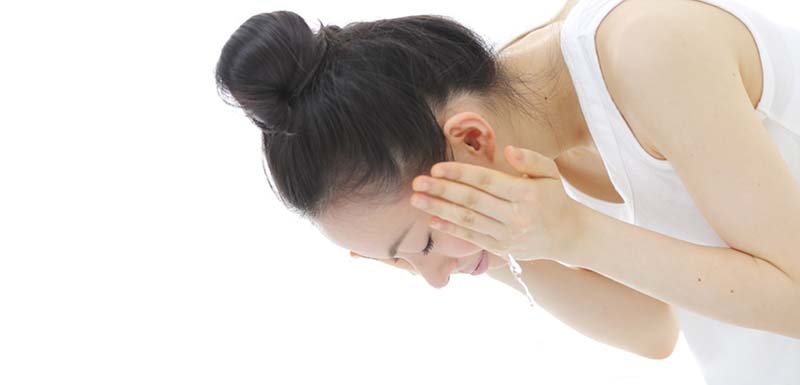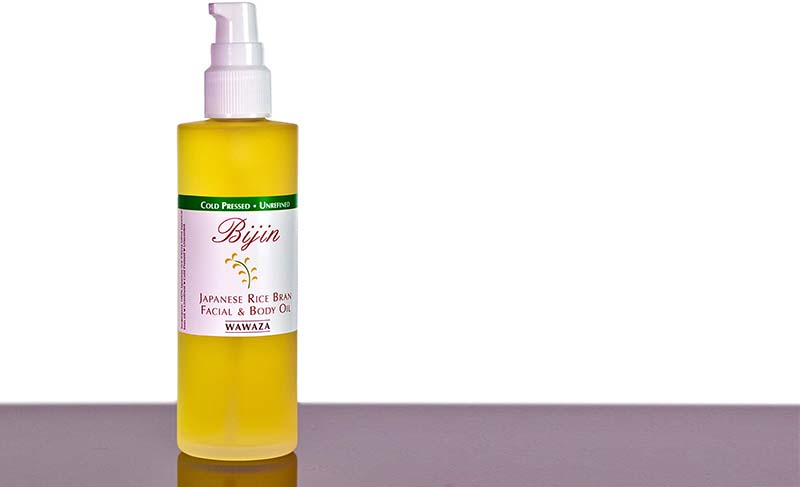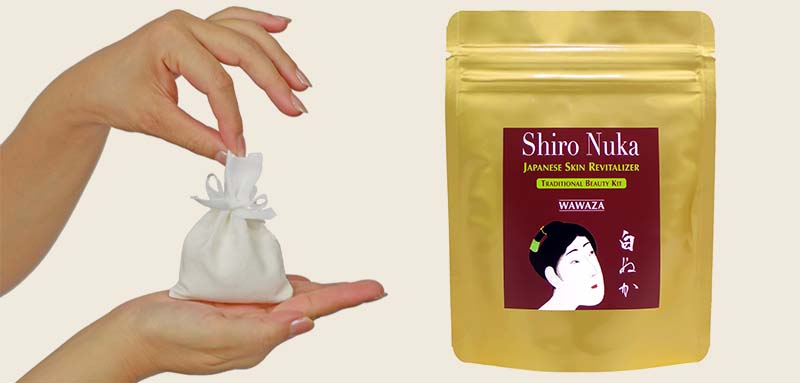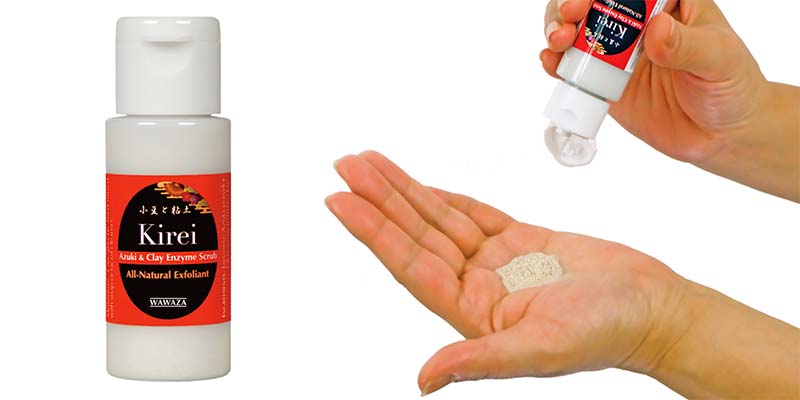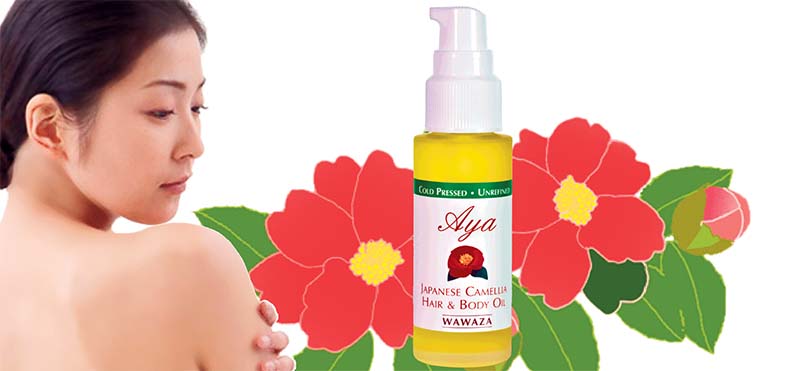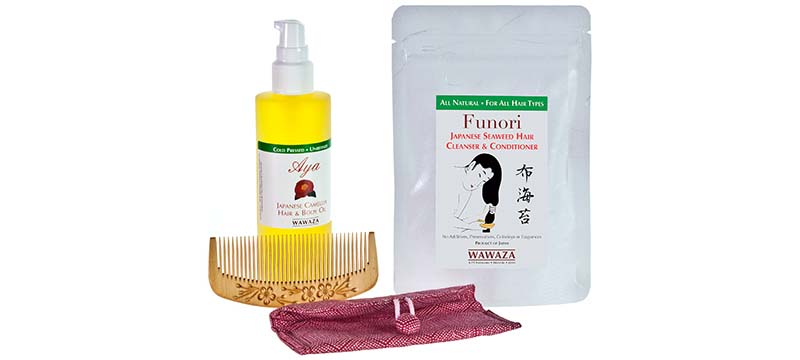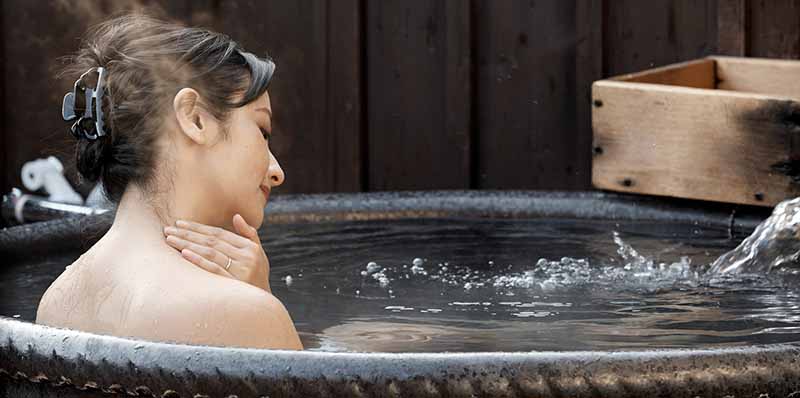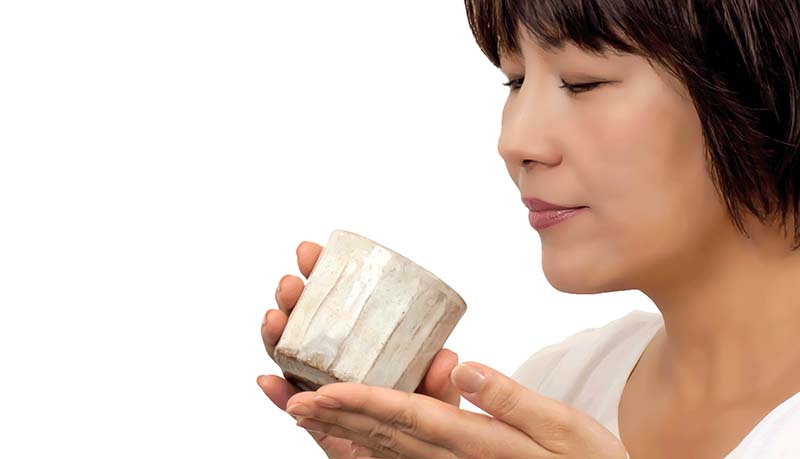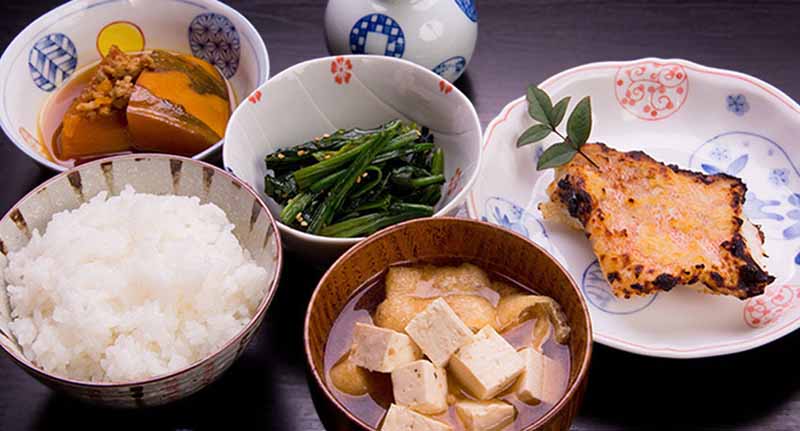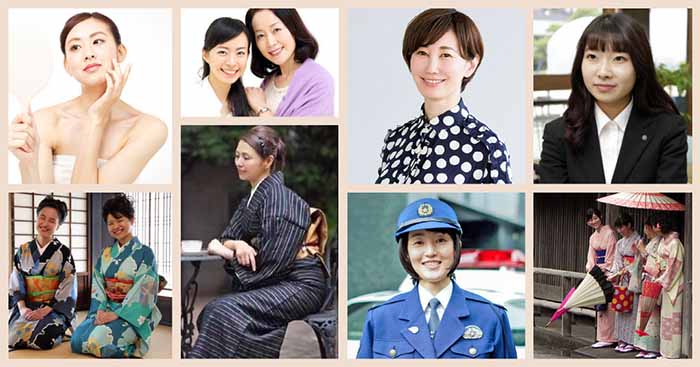
Lasting beauty is not a project; it's a way of life.
If there is no beauty gene, why are Japanese women regarded as beautiful by so many worldwide? How do they manage to look 10, 20, or more years younger than their actual age?
Japanese women are more interested in skin and hair care than color cosmetics and fragrances. According to a study by EU-Japan Center for Industrial Cooperation, skincare and hair care products comprise nearly 2/3 of the Japanese cosmetics market. Fragrances stand at the very bottom at less than 1%.
Japanese women take care of their skin and hair—regularly and meticulously. They eat right, dress well, and don't overdo makeup either. To top it all, they are graceful and well-mannered. They prefer not to show off and like to be appreciated rather than noticed.
These are learnable skills that will make any woman look more attractive—at any age.
1. Wash face with lukewarm water & additive-free cleanser
Proper cleansing with a good facial cleanser is where skincare begins. Natural soaps such as Artemisia (yomogi) or activated charcoal (sumi) are excellent choices.
Cleansing Tips for Healthy Skin
- Wash Hands First
- Ensure your hands are clean before touching your face to prevent the transfer of germs and bacteria.
- Gentle Massage
- Apply cleanser with fingertips, using soft, circular motions to treat your skin to a gentle massage.
- Lukewarm Water
- Avoid hot water as it can strip away essential oils and cause dryness. Lukewarm water is ideal for preserving your skin’s natural moisture.
- Pat Dry
- Use a clean, soft towel to pat your skin dry gently. Avoid rubbing to prevent irritation.
- Frequency
- Wash your face twice a day for normal skin, or once for those with very dry or sensitive skin, to maintain balance and cleanliness.
It is essential to clean the face if it becomes sweaty because perspiration irritates the skin and can trigger various skin conditions, including itchiness, breakouts, and rashes.
2. Moisturize with unrefined rice bran oil
Unrefined Rice bran oil is a fast-absorbing, gentle, effective, and non-comedogenic moisturizer. Since it does not undergo high-heat or chemical processing, it retains exceptionally high levels of vitamins E complex (tocotrienol), B1, B3, and the anti-aging Gamma-oryzanol antioxidant. Rice bran oil improves texture, diminishes wrinkles, evens tone, and reduces blemishes. Its natural plant Squalene forms a protective barrier against moisture loss and keeps skin soft and supple. Rice bran oil is also excellent for removing mascara, eye shadow, lipstick, and even waterproof makeup.
Use as moisturizer
- Application:
- Dispense a small amount of oil into your palm.
- Spread evenly across your face, neck, and other sensitive areas.
- For soft, moisturized lips, apply a small amount as needed.
Removing makeup
- Application:
- Apply a small amount of oil to makeup areas using your fingertips.
- Use soft, circular motions to gently dissolve makeup.
- Removal:
- Gently wipe away makeup with a soft tissue or cotton pad.
- Repeat the process if necessary.
- Rinse:
- Finish by washing and rinsing your face as usual.
3. Pamper skin with germ & bran of Japanese rice (Shiro Nuka)
For centuries, Japanese women have used rice bran (nuka or komenuka) to beautify and maintain their much-admired complexion. Shiro Nuka is a special formulation made from nutrient-rich germ and inner bran (aleurone) of Japanese rice.
Shiro Nuka tones, hydrates, improves skin's texture and diminishes wrinkles and fine lines. It contains high levels of vitamins E complex (tocotrienol), B1 (thiamin), B3 (niacin), plus a potent anti-aging antioxidant called Gamma-oryzanol.
Ways to Use Shiro Nuka
- Traditional Application:
- Utilize a "sarashi-cotton" applicator bag to apply Shiro Nuka, honoring the classic Japanese method.
- As a Brightening Face Wash:
- Combine Shiro Nuka with water to concoct a skin-brightening face wash.
- For Detailed Guidance:
- Explore our step-by-step tutorial on our website for comprehensive instructions on using Shiro Nuka effectively.
These options offer versatility in incorporating Shiro Nuka into your skincare regimen.
4. Deep cleanse with azuki bean enzymes
Exfoliating once or twice a week can do wonders for the skin. Proper exfoliation removes accumulated dead surface skin cells, which make it look dull, and promotes cell regeneration. While abrasive or AHA (alpha hydroxy acid) type chemical exfoliants can be effective but harsh for delicate skin, natural enzymes in azuki beans offer a significantly gentler alternative.
Azuki has been an indispensable Japanese skincare ingredient since the eighth century Nara period. It contains a natural cleanser compound called saponin, and vitamin B9 (Folic acid) which promotes new, healthy cell growth.
Azuki Exfoliation in Minutes
- Prepare Your Skin:
- Moisten skin with lukewarm water.
- Create the Mix:
- Place 1/4 tsp of Azuki powder in your palm.
- Add a few drops of warm water and mix to form a paste.
- Application:
- Gently apply the paste to your face.
- Rinse & Moisturize:
- Rinse off the paste and apply your favorite moisturizer.
Enjoy refreshed skin with azuki powder exfoliant in just a few simple steps.
5. Apply a hydrating facial mask
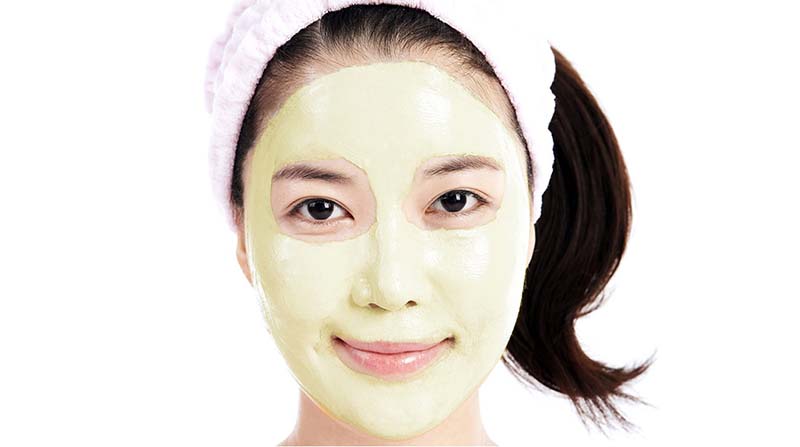
Facial masks are a real treat. They hydrate the skin, draw out impurities, even-out tone, smooth texture, and improve the appearance of pores. Plus, they make you feel relaxed and pampered.
Matcha and Yomogi Masks for Smoother Skin
- Preparation:
- Combine five grams of the Matcha & Yomogi mask powder with four tsp of warm water to form a paste.
- Application:
- Apply thin layers to the face and neck.
- Treatment Time:
- Leave the mask on for fifteen minutes to allow the antioxidants and tannins to work.
- Cleanse & Hydrate:
- Rinse off and apply moisturizer for a smooth, lifted appearance.
Pearl Powder Masks for Cell Repair and Collagen Boost
- Mixing Ingredients:
- Blend two grams of pearl powder with two tsp of wheat powder.
- Add three tsp of water, milk, or soy milk.
- Include additional ingredients like honey or moisturizing oil as preferred.
- Application:
- Apply the mixture to your face.
- Treatment Time:
- Leave it on for ten minutes to let the ingredients boost collagen and repair cells.
- Rinse & Moisturize:
- Wash off the mask and apply moisturizer to enhance the skin’s radiance.
These easy-to-follow steps ensure optimal benefits from each mask, promoting healthier, radiant skin.
6. Lavish body and hair with Camellia oil
With its golden color and creamy texture, Camellia oil has been the beauty elixir of Japanese women's legendary skin and hair for centuries.
Japanese Camellia oil is fast absorbing, antioxidant-rich oil, and does not clog pores (non-comedogenic). It is an excellent all-body moisturizer. It also does a great job to soften rough elbows, legs, knees, and heels, plus helps heal minor scars and stretch marks. As a facial moisturizer, Camellia oil is a transdermal carrier of collagen and repairs damage caused by dryness, sun exposure, and aging. Camellia oil's list benefits for hair is long: It softens hair and makes it more manageable, restores hair's natural sheen, repairs breakage and split ends, and eases dry scalp and itchiness. For unmanageable hair, applying Camellia oil before washing hair untangles it and makes it more manageable.
Japanese Camellia oil is cold-pressed from seeds of the yabu-tsubaki, the wild variety of Camellia japonica flower (yabu means wild, tsubaki means camellia). The best way to apply it is on damp skin and hair, such as in after showering. It spreads well, and a little goes a long way.
How to use Camellia Oil for Haircare
- Preparation:
- Towel dry your hair after washing.
- Application:
- Dispense a few drops of Camellia oil into your palms and spread evenly.
- Apply the oil to your hair and scalp, starting from the top, using your fingertips.
- Focus on Ends:
- Give extra attention to the ends of your hair to combat dryness and prevent breakage.
How to use Camellia Oil for Skincare
- Preparation:
- Pump a small amount of oil into your palm.
- Application:
- Rub your palms to spread the oil, then pat it gently over your face and neck. Avoid rubbing hard.
- Use small circular motions until the oil is absorbed.
For an in-depth guide, see our detailed article on How to Use Japanese Camellia Oil. Towel dry hair after washing.
7. Hair Care with seaweed, Camellia oil, and tsuge comb
Japanese are famous for the beauty of their hair, which typically retains its health and sheen well into old age. They have used Camellia oil, Tsuge wood combs, and seaweed to cleanse and beautify hair for a very long time.
Camellia oil adds brilliance, forms a protective layer over the hair shaft, and prevents moisture loss.
Japanese tsuge combs have smooth, seamless, anti-static teeth which glide through hair without snagging, bringing out hair's natural gloss.
Seaweed: Shampoos did not exist in Japan until modern times (in 1932, KAO Cosmetics company sold its first shampoo under the brand name Kami-arai.) Seaweed for hair care comes in powder form. It has a near-neutral pH of about 6.5, which does not throw off the healthy balance of hair's natural oils, unlike shampoos. It cleanses and conditions, volumes up thin hair, makes coarse hair more manageable, and reduces hair loss
Using Seaweed Powder for Hair Cleansing and Conditioning
- Prepare the Mixture:
- Combine one teaspoon of seaweed powder with one cup of hot water and let it cool.
- Wet Your Hair:
- Rinse your hair with lukewarm water to prepare it for the treatment.
- Application:
- Apply the mixture to the scalp, massaging gently with your fingertips.
- Distribute it through the hair, starting at the roots with straight strokes.
- Rinse:
- Rinse thoroughly to remove the mixture from your hair.
For more detailed instructions, visit our how-to-use page on our website.
8. Protect from the sun with apparel, nutrition, & sunscreen

Japanese women employ a comprehensive three-tiered approach to shield their skin from the sun's harmful UV rays:
- Minimize Exposure:
- They adorn themselves in elegant sun-protective attire, including UV-rated gloves, scarves, leggings, and hats that extensively cover the face and neck. Summer parasols are a common accessory, offering additional shade. Special covers attached to bike handlebars protect hands from reflected UV rays from concrete, glass, and vehicles.
- Strengthen the Skin:
- A diet rich in green tea and vitamin C-rich foods is essential. The EGCG catechins in green tea combat UV damage and photo-aging. Vitamin C, abundantly found in tomatoes and complemented by the antioxidant lycopene, aids in repairing and mitigating the damage inflicted by UV exposure.
- Effective UV Blockage
- The meticulous application of water-resistant, broad-spectrum sunscreens ensures a barrier against UVA and UVB rays. Adherence to the recommended application quantity is crucial, as excess and insufficient amounts can be detrimental.
In essence, the combination of avoiding direct sun exposure, fortifying the skin through a nutrient-rich diet, and the diligent application of quality sunscreens constitutes the holistic approach Japanese women adopt to maintain their skin's radiance and health amidst the persistent threat of UV damage.
9. Take baths to soothe body and soul
Japanese love water and bathing. They take baths at home (ofuro), in communal bathhouses (onsen), and wash their bodies in ritual purification ceremonies (misogi).
Japanese bathe typically in the evening. First, they shower and scrub thoroughly. Next, they step into the tub and relax for ten to fifteen minutes. The water temperature should be comfortable to the skin, typically between 38 and 40 °C (100 to 104 °F). After bathing, they put on comfortable clothes and power down to deepen their relaxation. The Japanese call this yu-agari (after bathing).
The Japanese enhance their bathing experience with a variety of herbs known for their skin-enriching and therapeutic properties:
- Green tea baths: Tighten pores, alleviate skin irritations, and augment moisture retention.
- Yuzu (Japanese citron) baths: Offer refreshing and moisturizing benefits, courtesy of aromatic essential oils.
- Hinoki (Japanese cypress) Baths: Boast anti-microbial properties, aid in lowering blood pressure, uplift mood, and emanate the tranquil aroma reminiscent of Japanese bathhouses.
- Yomogi (Japanese Artenisia) leaves baths: Infused with the invigorating aroma of cineole essential, these baths nourish the skin, alleviate conditions like eczema, and provide relief to aching joints and muscles.
If you live outside Japan, chances are your home is not equipped with a Japanese style bath. Nevertheless, you can incorporate the essential elements of the Japanese bathing ritual into your routine. See How to Take a Japanese Style Bath at Home.
10. Drink plenty of green and herbal teas
Green Teas
Green teas come in different varieties, but they all have one thing in common: Green teas are produced by either steaming or roasting the fresh tea leaves — while other teas, such as black, are made by fermentation. For this reason, green teas retain more of tea leaves' beneficial antioxidants.
Japanese women drink one or two cups of green tea per day, at least. They also pour it over cooked rice sprinkled with savories for a quick-to-prepare traditional dish called ochazuke (recipe here), use matcha to make a super-green smoothie or a cup of umami-rich latte, and cut down on salt intake by mixing green tea with sea salt to make a traditional food garnish called matcha-zhio.
Green tea slows the skin's aging process, boosts protection from sun damage, increases immunity, and improves cardiovascular health, among numerous other benefits.
There is a comprehensive information page on our site for Japanese green tea flavors, benefits, and how to make.
Herbal Teas
Japanese herbal teas offer benefits ranging from improving complexion to ridding the skin of toxins and relieving irregular periods.
- Yomogi cha (Artemisia tea) is the Japanese wonder herb for women's health and beauty. Yomogi boosts skin's renewal cycle, alleviates inflammatory skin conditions, improves tone, and relieves cramps. It has a refreshing, spring-like aroma.
- Hatomugi cha (pearl barley tea) is routinely recommended by Japanese dermatologists. Hatomugi contains an array of antioxidants which diminish blemishes and spots by slowing-down skin's melanin production. It has a light, popcorny and slightly sweet taste.
- Gobo cha (burdock roots tea) is a skin-healer and detoxifier. It increases circulation and rids skin of accumulated toxins and acne-causing bacteria. Gobo's tannins tighten pores, giving the effect of smoother skin using less makeup. It is bittersweet and roasty with distinct earthy notes.
The Japanese traditional method for brewing herbal teas is called senjiru (to infuse, to decoct). It's easy to do at home and does not require special setups. See the How To Brew Herbal Teas page on our site for detailed explanations.
11. Eat a variety of balanced foods in moderation
Contrary to common belief, Japanese meals are not very small. However, instead of serving lots of one type of food on a big plate, they serve more variety in smaller dishes. The typical Japanese meal has one bowl of rice, one soup, and three dishes, arranged with balanced nutrition, taste, texture, smell, and appealing presentation.
Japanese women have the lowest obesity rate and the highest life expectancy in the world (2017 numbers). The nutritional contents of Japanese foods — centered around rice, noodles, soy products, mushrooms, fruits, vegetables, and fish — together with Japanese traditions and cultural habits, are responsible for the health and longevity of Japanese women.
Japan is a land of four seasons. Eating seasonal foods is a Japanese national obsession and a part of its tradition of kisetsukan (sensing the seasons). Seasonal foods arrive at the peak of freshness with higher nutritional content than out of season foods. They also taste better and have high savory (umami) content. Umami-rich foods are mouth-watering, literally. They trigger the secretion of saliva and digestive enzymes, which lead to better digestion and absorption of nutrients into the body.
Wisdom of the old Japanese saying "stop eating when eight-tenths full" (hara hachi bu) is supported by scientific facts. On average, it takes twenty minutes for the brain to process the information coming from the stomach. If we continue to eat until we feel full, we will overeat.
Can eating with chopsticks make us more healthy? In all likelihood, yes. Chopsticks pick up less food than forks and spoons, resulting in more efficient chewing and better digestion. Using chopsticks also helps prevent overeating by slowing down the eating process, giving the brain time to sense that we are full.
12. Radiate Grace: Elegance & Hidden Beauty
The Essence of Unseen Beauty
In the heart of Japanese aesthetics lies the concept of mie-nai osharé (unseen, hidden beauty), a principle that beauty does not need to be overtly displayed to be appreciated. True beauty radiates from within, whether exhibited or not. This ethos is deeply ingrained in the Japanese woman, who is not driven by a desire to be noticed but rather to be appreciated for her intrinsic qualities.
The Art of Dressing
When a Japanese lady adorns herself, a practice she engages in even for everyday occasions, her choices are meticulous. She selects her outerwear for the appropriate look and is equally discerning about what she considers beautiful to wear underneath. This isn't about lacy undergarments or intimate apparel but something profoundly personal, meant solely for her.
The Elegance of the Kimono
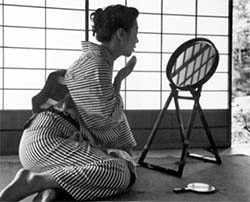
This philosophy extends to the traditional Japanese kimonos, which boast fine inner linings, typically made of silk adorned with beautiful patterns and colors. These are hidden treasures, not meant for public display, echoing the sentiment that beauty, though unseen, is deeply felt and appreciated.
Poise and Grace
Refined manners and poise elevate the allure of any woman. This elegance stems from a deep comfort with oneself, one's actions, and their execution. It's a harmonious blend of self-assurance and grace that radiates an undeniable elegance, transcending physical attributes and social standings.
Beauty in Perception
The Japanese adage, "In love, blemishes become dimples" (horete shimaeba, abata mo ekubo), mirrors the English "Love is blind," underscoring that beauty is a relative and subjective quality. In this context, terms like "graceful" and "charming" shape perceptions of beauty. A woman graced with charm is invariably perceived as beautiful.
The Feminine Ethos
The typical Japanese woman is a blend of femininity, grace, and dignity, irrespective of attractiveness, age, or social status. She is not pursuing a public spectacle but is devoted to nurturing her mie-nai osharé for her esteem and fulfillment.
In this silent yet profound manner, she commands appreciation, embodying an elegance that is felt more than it is seen.

